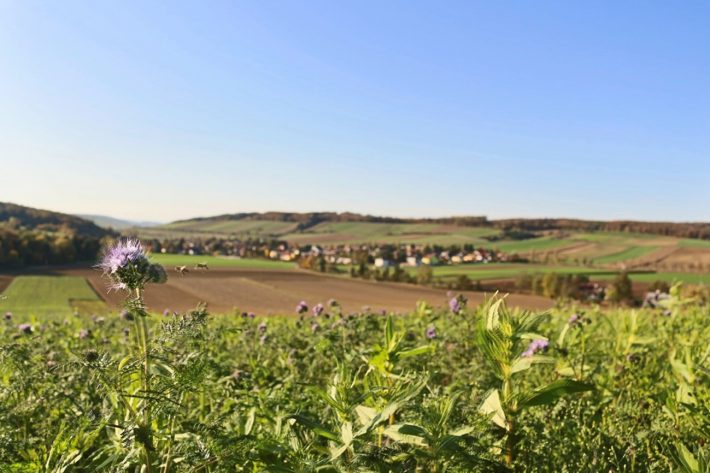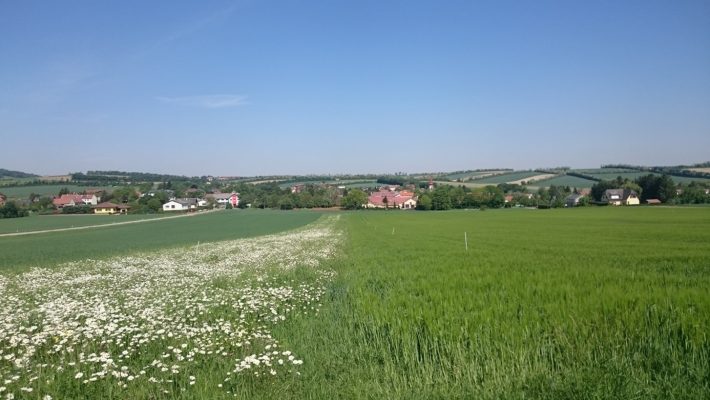Managing agricultural biodiversity takes time
A three-year research project shows how functional traits drive pollinator and predator responses to semi-natural grassland strips embedded in agricultural landscapes. The findings are published in Journal of Applied Ecology.

Agricultural landscapes are increasingly affected by the ongoing loss of biodiversity and associated ecosystem services such as pollination and pest control. A team of researchers from the University of Vienna and the University of Natural Resources and Life Sciences (BOKU Vienna) tested new approaches for agri-environment schemes to conserve and support this biodiversity.
In their three-year pilot project “REGRASS”, they investigated whether and how narrow, semi-natural grassland strips improve the conservation of agricultural biodiversity and associated functions.
For the study, the team they laid out strips ten meters wide and about 135 meters long in winter wheat fields within the agricultural landscape of Lower Austria. They determined how different pollinators and predatory species adopt the new measure in relation to species-specific functional traits such as body size, feeding, or habitat preferences.
The results show that these characteristics, spatial factors and time are decisive for the success of the new biodiversity conservation measure such as the tested semi-natural grassland strips and were recently published in the Journal of Applied Ecology.

“Despite the expansion of agri-environmental schemes under the Common Agricultural Policy in the EU, with a budget of €365 billion for the period 2021-2027, agricultural biodiversity is rapidly declining and needs improved protection,” said the lead author of the recently published study, Dr Bea Maas from the University of Vienna.
“The loss of fallow land and the increase in monocultures have a particularly damaging effect on agricultural biodiversity and its valuable functions,” knows Prof. Thomas Frank, head of the project from BOKU Vienna.
The newly established grassland strips provided cross-links between semi-natural meadows and arable land, and differed from previous measures primarily in the variety of used plant seeds and their plant species composition mimicking semi-natural grasslands in the area.
“Our results show that pollinators such as bees and hoverflies, and predators such as carabid beetles and spiders respond to grassland strips – but rather slowly and depending on their functional traits,” explains Maas.
“Larger, actively hunting and more mobile species responded more quickly, while our results clearly show that grassland strips and short-term periods alone are not sufficient for effective biodiversity conservation in agricultural landscapes,” adds Frank.
The research team advocates the promotion of permanent habitats to support agricultural biodiversity – “only through the availability of long-term conservation measures, we can effectively support biodiversity in agricultural landscapes”, concludes Maas.
You can read the article for free here:
, , , et al. Functional traits driving pollinator and predator responses to newly established grassland strips in agricultural landscapes. J Appl Ecol. 2021; 00: 1– 10. https://doi.org/10.1111/1365-2664.13892
Media contact
Dr Bea Maas, Department of Botany and Biodiversity Research, University of Vienna
Email: bea.maas@unvie.ac.at
Like what we stand for?
Support our mission and help develop the next generation of ecologists by donating to the British Ecological Society.